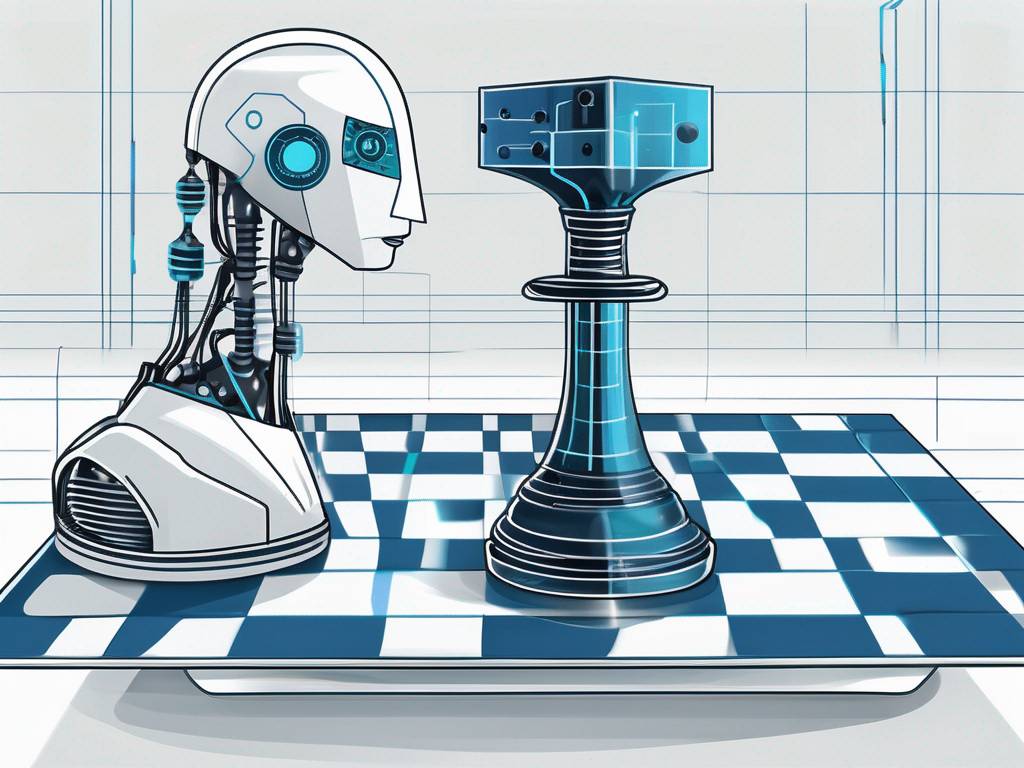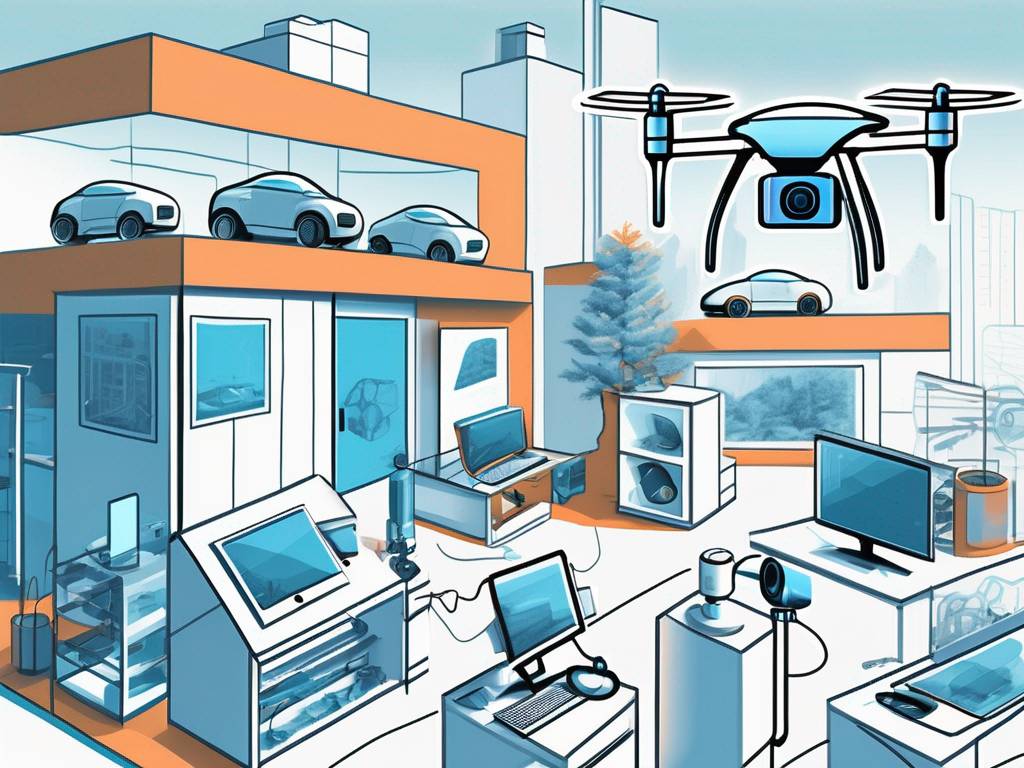How Does AI Detection Work?
In recent years, Artificial Intelligence (AI) technology has made remarkable strides, revolutionizing numerous sectors with its diverse applications. AI detection stands out as a key application, significantly enhancing security measures and enabling businesses to make informed decisions. This article delves into the intricacies of AI detection, exploring its underlying principles, mechanisms, real-world applications, and impact on various industries.
Defining AI Detection
At its core, AI detection refers to the utilization of advanced AI algorithms and machine learning techniques to recognize patterns, anomalies, or specific objects within an inputted dataset or real-time data stream.
Understanding AI Detection
Through advanced computational models, AI detection systems can analyze vast amounts of data, extracting significant insights that humans might overlook. Traditional data analysis methods often struggle with large datasets containing a mixture of text, images, and videos in various languages. AI detection algorithms, however, are skilled at processing and interpreting a wide array of data types, leading to more comprehensive and precise analyses.
The development and refinement of these systems requires collaboration between data scientists, software development teams, and experts in statistical methods. These professionals train AI models with diverse, high-quality training data, ensuring the accurate detection of subtle nuances across different data types. This process is vital for the relevance and accuracy of AI detection tools in real-world scenarios.
The Role of AI Detection in Modern Technology
AI has become a cornerstone in contemporary technology, marked by the synergy between AI detection and natural language processing algorithms. This collaboration is fundamental to the functionality of voice assistants like Siri and Alexa.
Natural language processing (NLP) technology enables machines to comprehend and manipulate human language, facilitating the generation of AI-written text. This capability also allows for complex NLP tasks such as semantic analysis, part of speech tagging, and entity recognition. The field of NLP is continuously evolving, empowering data scientists to develop more advanced language models and thereby enhancing the NLP capabilities of future technologies.
As NLP technology advances, AI detection systems will become increasingly sophisticated. This progression will unlock new possibilities, leading to unprecedented levels of efficiency and accuracy in various applications.
The Mechanisms Behind AI Detection
Behind every successful AI detection system lies a complex combination of algorithms, machine learning methods, and pattern recognition. Understanding these allows us to appreciate the intricate workings of AI detection technology and its practical applications.
Algorithms & AI Detection
Algorithms form the backbone of AI models. These mathematical procedures and rules process the inputted data and perform calculations to derive meaningful information.
AI detection algorithms come in various forms, each tailored for specific tasks. From clustering algorithms that group similar data points together to decision trees that classify data based on a series of logical conditions, these algorithms work hand in hand to uncover patterns and make accurate predictions.
For instance, in fraud detection, algorithms analyze transaction data and identify suspicious patterns that may indicate fraudulent activity. These algorithms consider factors such as transaction frequency, location, and amount spent to flag potentially fraudulent transactions, helping financial institutions protect their customers.
Algorithms also play a crucial role in image recognition, enabling AI systems to identify objects, faces, and even emotions. By analyzing pixel patterns and comparing them to pre-trained models, these algorithms can accurately classify images, making them invaluable in fields like autonomous vehicles and security systems.
Machine Learning & Pattern Recognition
AI detection systems employ machine learning techniques to evolve based on the data they analyze, progressively enhancing their precision and efficiency in detection tasks. Deep learning, a key subset of machine learning, plays a pivotal role in this enhancement. It enables systems to autonomously adapt to new information and changing environments, reducing the need for manual intervention.
When deploying ML in AI detection, techniques such as supervised learning are used in scenarios with labeled data, while unsupervised learning is applied to detect anomalies in data without predefined labels. Reinforcement learning is leveraged for dynamic, adaptive systems. The effectiveness of machine learning in detection tasks is contingent upon the quality of the training data and the ability of the models to adapt to new and evolving threats.
Different Types of AI Detection
As AI continues to advance, it has become more capable of performing complex tasks that were once exclusive to humans. From analyzing images to interpreting and generating art, AI detection has revolutionized various industries and opened up new possibilities.
Image Recognition
Image recognition involves the use of AI algorithms to analyze and interpret visual data, identifying objects, faces, and scenes within images or videos. This technology finds applications in various domains, including medical imaging and self-driving cars.
In the healthcare sector, image recognition plays a crucial role in medical imaging. AI algorithms can analyze medical scans, such as X-rays and MRIs, to detect abnormalities and assist doctors in making accurate diagnoses. This not only saves time but also improves patient outcomes.
Imagine a world where surveillance cameras can automatically detect suspicious activities, alerting security personnel in real-time. AI-powered image recognition systems could soon make this a reality!
Speech Recognition
Speech recognition is another prominent area of AI detection, enabling machines to understand and interpret human speech. This technology has paved the way for voice assistants like Siri and Alexa, revolutionizing human-computer interaction and enabling hands-free control of various devices.
Thanks to this AI-driven technology we can now effortlessly communicate with our smartphones, smart speakers, and other devices using voice commands. This has made our lives more convenient and efficient, allowing us to perform tasks like setting reminders, playing music, and even ordering groceries, all with just our voice.
But the impact of speech recognition goes beyond personal assistants. In industries such as customer service, call centers are now leveraging AI-powered speech recognition systems to analyze customer interactions. By automatically transcribing and analyzing conversations, businesses can gain valuable insights into customer sentiment, identify trends, and improve their services.
Natural Language Generation
Natural Language Generation (NLG) is a sophisticated branch of artificial intelligence that transforms structured data into understandable natural language. It begins by taking structured inputs, such as numerical data or specific facts, and interprets the context and patterns within this data. NLG then employs complex linguistic rules to structure this information into coherent narratives, ensuring that the text is grammatically sound and contextually relevant.
NLG’s applications are diverse, ranging from automated report generation, where it turns raw data into comprehensive reports, to content creation for media, crafting news stories from factual data. It also plays a vital role in personalized communication, such as generating tailored emails, and is essential in the functionality of chatbots and virtual assistants, enabling them to interact in a more human-like manner.
From enhancing security to revolutionizing communication through Google translate, AI detection is transforming the way we live and interact with the world around us.
The Impact of AI Detection on Various Industries
AI detection has had a profound impact on businesses, revolutionizing operations and driving innovation. Its applications spans across domains, each with its unique benefits and implications.
AI Detection in Healthcare
The healthcare industry leverages deep learning and AI detection to improve medical diagnoses, monitor patient health, and assist in drug discovery. Machine learning algorithms are also used to analyze medical images and clinical data, aiding physicians in early disease detection and treatment planning.
AI detection enables the analysis of vast genomic datasets, contributing to personalized medicine and the development of targeted therapies. The potential of AI detection in healthcare is vast, with the promise of improving patient outcomes and reducing medical costs.
AI Detection in Cybersecurity
Cybersecurity is another domain where AI detection plays a critical role. With the growing number and sophistication of cyber threats, AI detection systems can quickly identify abnormal network behavior, detect malicious software, and analyze large volumes of data for potential vulnerabilities.
By leveraging AI detection tools, organizations can strengthen their cybersecurity measures and proactively mitigate risks. This technology empowers security teams to respond swiftly to evolving threats, ensuring the integrity and confidentiality of sensitive information.
AI Detection in Autonomous Vehicles
The automotive industry has witnessed significant advancements with the integration of AI detection in smart cars. Through computer vision and Iot sensor technology, AI detection enables vehicles to perceive and understand the surrounding environment, making real-time decisions to ensure passenger safety.
From detecting road obstacles and pedestrians to analyzing traffic conditions, AI detection allows autonomous vehicles to navigate complex scenarios, reducing the likelihood of accidents and improving overall road safety.
AI Detection in Education
In the realm of education, the integration of AI detection is revolutionizing learning experiences for students at all academic levels. This technology offers personalized learning solutions, enabling teachers to better address individual student needs and provide students with more opportunities to learn effectively. It also plays a crucial role in the early detection of learning difficulties, significantly enhancing student engagement and increasing accessibility for students with disabilities.
Through AI detectors, computer programs can analyze exactly where students are having trouble, pinpointing the right solutions for their needs. This allows students at all levels to get the assistance they need, especially in a diverse class where this may be a challenge.
One significant application of AI in education is in text analysis, such as plagiarism checkers for research papers and grammatical analysis tools. These tools analyze text to ensure academic integrity and help students improve their writing skills. The rise of AI writing tools and AI created content has also made it necessary for AI detectors to be able to detect AI-generated content. This ensures that the originality and authenticity of student work are maintained.
Future Trends in AI Detection
The field of AI detection continues to evolve at a rapid pace, presenting exciting possibilities and challenges.
Advancements in AI Detection Technologies
Improvements in machine learning algorithms, enhanced computational power, and expansive datasets are driving developments in AI detection. This progress enables more precise and rapid pattern recognition, anomaly detection, and feature identification across various fields.
Integration with the Internet of Things (IoT) and edge computing is a notable trend, allowing real-time data analysis and decision-making at the data source. This is crucial in areas requiring immediate responses, such as autonomous vehicles and industrial automation. Additionally, advances in computer vision and natural language processing are enhancing image, video, and human language interpretation, broadening the scope of AI detection applications.
The Potential Challenges & Solutions in AI Detection
Despite the vast benefits of AI detection, there are several challenges that need to be addressed to fully harness its potential. Ethical considerations, privacy concerns, and biases in AI algorithms are among the primary challenges that researches and policymakers are actively working to overcome.
Developing robust regulations, fostering transparency, and promoting ethical guidelines are crucial steps in ensuring the responsible and equitable use of AI detection technology. By addressing these challenges head-on, the future of AI detection can benefit society as a whole.
Final Thoughts
AI detection is a powerful tool that has the potential to revolutionize various industries and enhance our everyday lives. Understanding its underlying principles, mechanisms, and impact on different sectors is crucial to unlocking its full potential. As technology continues to advance, AI detection will undoubtedly play an even more significant role in shaping our future. By embracing this technology and addressing the challenges that lie ahead, we can harness the transformative power of AI detection for the benefit of society.
Questions?
- What is artificial intelligence detection, and how does it differ from traditional methods?Toggle questionAI detection involves the use of artificial intelligence algorithms and techniques to identify patterns, objects, or anomalies in data. Unlike traditional methods that rely on explicit programming, AI detection systems use deep learning models to learn from data, enabling them to adapt and improve over time without manual intervention.
- What are the key applications of AI detection technology in various industries?Toggle questionAI detection finds applications across many industries, including healthcare, finance, security, and manufacturing. It is used for image and speech recognition, fraud detection, predictive maintenance, quality control, and more. The technology enhances efficiency, accuracy, and decision-making processes in these sectors.
- How does AI detection contribute to improving security and safety measures?Toggle questionAI detection plays a pivotal role in security by identifying potential threats through image recognition, anomaly detection, and behavior analysis. In public spaces, it can enhance surveillance, while in cybersecurity, it aids in the detection of unusual patterns or malicious activities, improving overall safety measures.
- Can AI detection be applied to healthcare, and if so, how does it benefit the industry?Toggle questionYes, AI detection is increasingly used in healthcare for medical imaging analysis, disease diagnosis, and drug discovery. It helps in the early detection of diseases, assists in personalizing treatment plans, and accelerates research processes by analyzing vast datasets, ultimately improving patient outcomes.
- What types of patterns can an AI detection system identify?Toggle questionAI detection systems can identify a wide range of patterns, from common trends to anomalies. Whether it's identifying fraudulent activities, optimizing workflows, or recognizing patterns in AI-generated text, these systems are versatile tools for enhancing data analysis and decision-making processes.
- What is an AI-content detector?Toggle questionThese systems are used for detecting AI-generated content. The technology utilizes artificial intelligence algorithms to analyze and identify various types of content, including text, images, and videos, for specific characteristics or categories. It helps by flagging or categorizing content based on predefined criteria.
- Can AI be used to identify deepfakes?Toggle questionYes, AI plays a crucial role in identifying deepfakes. Deepfakes are a form of synthetic media created using AI, where one person's likeness is artificially replaced with that of someone else. An AI detection software can analyze subtle inconsistencies in images or videos, such as irregular facial expressions, unnatural movements, or inconsistencies in lighting, which might not be easily perceptible to the human eye.
- What is the Natural Language Toolkit (NLTK)?Toggle questionThe Natural Language Toolkit, or NLTK, is a suite of libraries and programs for symbolic and statistical natural language processing (NLP) for the Python programming language. It's widely used in academia and multiple industries for a variety of NLP tasks.

 hello@westlink.com
hello@westlink.com  (866) 954-6533
(866) 954-6533  700 N Colorado Blvd,
700 N Colorado Blvd,







Comments